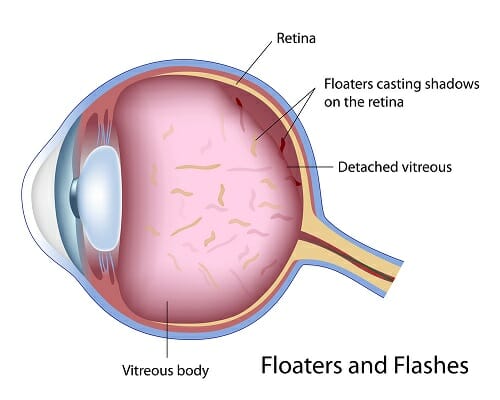What are the treatments?
Depending on the cause and nature of your floaters, there are a few different types of treatment. It is important to remember that not all floaters need to be treated. Floaters are generally harmless and are just a sign of aging. If your floaters are just a minor inconvenience, chances are your doctor will not recommend treatment.

It is also important to remember that not all floaters can be treated, depending on their position within your eye.
If you experience a sudden increase in floaters, be sure to consult a doctor right away. This can be a sign of retinal detachment.
For those who experience a large number of floaters and would like to reduce them, vitreolysis is an option.
What is Vitreolysis?
Vitreolysis is a procedure in which floaters are removed using a YAG laser. Your eye surgeon at Sierra Nevada Eye Center will start by numbing your eye. Then, using a laser lens placed on your eye, the YAG laser will be focused onto the front surface of the floater. The YAG laser emits very short bursts of energy, turning the floaters into gas, which is then reabsorbed by the body.
Once the procedure is complete, your doctor will treat your eyes with anti-inflammatory drops. Please note that most patients need to undergo two treatment sessions, and sometimes three, to achieve the result they are looking for.
The Recovery
You may experience some mild discomfort after your treatment. This can include redness and temporarily blurred vision after the procedure. Side effects include cataract development and intraocular pressure spike, but these are exceedingly rare.
If you are interested in learning more about vitreolysis and floaters, be sure to contact Sierra Nevada Eye Center as soon as possible!




